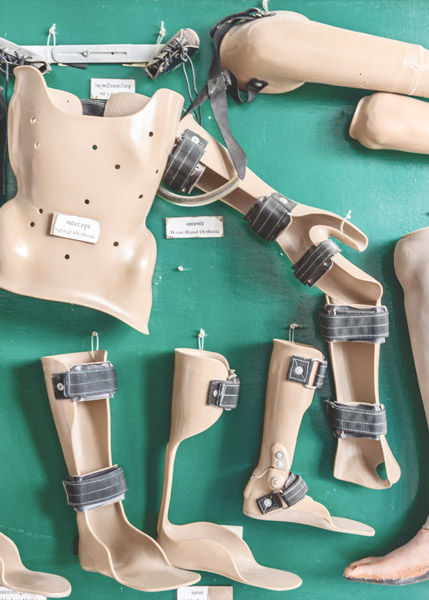Two hands, two arms, two feet two legs: these are some of the things that humans take for granted. However, if one of those should be lost, modern-day prosthetics can execute some of the tasks performed by the original limb.
While regaining fine motor control is life-changing for amputees, those with prosthetics still lack touch sensitivity and overall feeling in that lost section of the body. Human skin contains receptors that detect sensory information and signals from the environment, and the brain interprets these signals. However, mimicking the function of sensory receptors in artificial skin is a challenge that has not yet been conquered in the field of prosthetics.
In a recent study published in the journal Science, Professor of materials science and engineering Zhenan Bao’s team at Stanford University reported on a material called Digital Tactile System (DiTact), which could help restore the sense of touch for amputees.
DiTact is a strong, flexible material designed to mimic the function of mammalian skin mechanoreceptors, or sensory receptors that detect pressure changes on skin.
“Skin has evolved over millions of years to have many attractive sensory properties,” said Alex Chortos, professor of materials science and engineering and the first author of this study. “We use skin as our inspiration for sensor design to try to achieve those same properties in a synthetic system.”
Experiments were performed on mouse neurons, or more specifically, primary somatosensory cortical neurons. In the experiments, researchers observed mouse neuron firings after applying pressure to the DiTact.
This was performed through an organic circuit composed of carbon nanotubes, which digitally converted the mechanical pressure applied to DiTact into electrical signals. The frequency range was comparable to that of the human nervous system, which contributed to the validity of the experiment. It was noted that increased pressure to DiTact resulted in more frequent neuron firings, which is indicative of sensory stimulation.
Bao’s team faced a challenge in developing DiTact due to the fact that most electronics are made with rigid materials. They remedied this by using printed organic circuits, which have the ability to mimic the flexibility of human skin. Recent advances in biotechnology have contributed to this level of creativity in generating artificial materials. In fact, Clemson University has a collection of 3D printers and research labs that allow for digital fabrication and prototyping, which could potentially be used in experiments such as those performed at Stanford.
Chortos said that further research will focus on modification and specialization of DiTact. For example, it may be beneficial to use additional types of sensors other than mechanoreceptors in future studies, such as thermoreceptors or stretch receptors.
The ultimate goal of this research is to generate a fully functional artificial skin for prosthetic patients.
Categories:
Tigra Scientifica: What a Feeling
Ashley Stout, Asst. Photo Editor
February 15, 2016

Gareth Bogdanoff
The Cambodian School of Prosthetics and Orthotics
0
Donate to The Tiger
Your donation will support the student journalists of Clemson University. Your contribution will allow us to purchase equipment and cover our annual website hosting costs.
More to Discover








